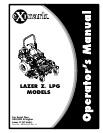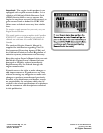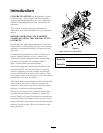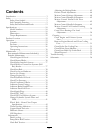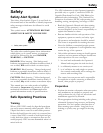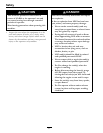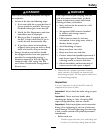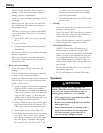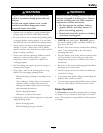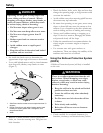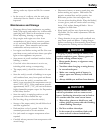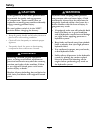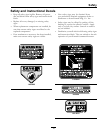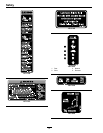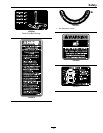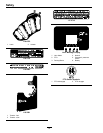
Safety
DANGER
LPG fuel is extremely ammable and vapors
are explosive.
• In case of re take the following steps:
1. If you can safely do so, stop the ow of
gas as quickly as possible. Never put
out ame unless gas can be shut off.
2. Notify the Fire Department and clear
immediate area of all people.
3. When gas ow is stopped, put out
the re. Usually when ow of gas is
cutoff, re will automatically stop.
4. If gas ow cannot be immediately
stopped, direct water on tanks to keep
them cool, but Do Not put out re.
• Storage locations and trailers should
be equipped with at least one approved
portable re extinguisher having a
minimum capacity of 18 lb (8.2 kg) dry
chemical with a B:C rating. Do Not
use Carbon Tetrachloride extinguishers
(Pyrene etc.).
DANGER
LPG vapors and liquid escaping from the
tank may cause serious injury or death.
Vapors or liquid may cause suffocation,
freezing of tissue, or frostbite.
• Store and service the mower in a well
ventilated area.
• An approved LPG detector installed
in trailers and storage areas is
recommended.
• LPG is heavier than air and may
accumulate in low lying areas, such as
ditches, drains, or pits.
• Avoid breathing of vapors.
• Keep away from vent valve.
• Keep away from eyes and skin.
• Contact trained and qualied personnel if
tank shows signs of frosted areas, makes
a hissing sound, or emits a foul odor.
• Obtain immediate medical attention if
contact occurs with vapors or liquid.
• Check that the operator’s presence controls,
safety switches, and shields are attached and
functioning properly. Do Not operate unless they
are functioning properly.
Inspection
It is very important to check the LPG tank and
components for wear or leaks.
Important: Never check for leaks using an open
ame.
Important: Never use bare hands when
checking the tting or valve. Escaping LPG
vapor and liquid freezes skin on contact.
Important: Only hand tighten tank connection
tting. Over tightening by the use of tools may
cause damage. If hand tightening does not stop
a leak, contact trained and qualied personnel
immediately.
• Before each use:
– Visually inspect the tank, hose, and tting and
be alert to a foul odor coming from the tank.
7



